What's New
Displaying results 2011 - 2020 of 4914
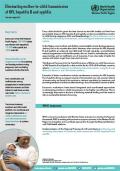
Resource | Fact Sheets,
In this Region, most mothers and children receive health services during pregnancy, delivery and in the months after birth. However, when services for HIV, hepatitis B and syphilis are planned and delivered through separate, uncoordinated, vertical programmes in the health system, this can result in redundancies, missed opportunities, and an inefficient use of resources. It can also make it harder for women and babies to get these important services.
The shared maternal, newborn and child health platform can coordinate and integrate interventions to achieve efficiencies and cost-effectively prevent these infections to achieve elimination.
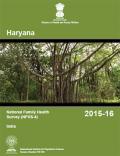
Resource | Publications,
This report presents the key findings of the NFHS-4 survey in Haryana, followed by detailed tables and an appendix on sampling errors. At the time of finalization of this report, wealth quintiles for the country as a whole were not ready. Therefore, on finalization of the national report, the breakup of key indicators by wealth quintiles for all states will be provided as an additional document and uploaded on the official website of MoHFW and IIPS.
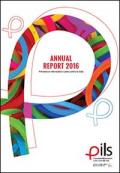
Resource | Publications,
Twenty years ago, PILS was born following a simple observation: almost ten years had passed since the first case of HIV had been registered in Mauritius, and yet there was no structure on our island, no treatment for HIV-positive people.
Over the last 20 years, PILS' vision and goals have evolved, but one thing remains constant: the will to change an improper social context, and to fight injustice and discrimination.
2016 was once again a pivotal year for PILS. We revised our 2014-2018 mid-term strategic plan, which allowed us to re-evaluate our direction and sharpen the measures through which we are working to end the AIDS epidemic by 2030. Two main needs emerged from this revision. First, the importance of strengthening operational systems and linking services. The idea is to strengthen links with existing partners in the implementation of programmes which are already underway, to ensure that those reached on the field are redirected to the services offered by PILS or the government. On the one hand, PILS has revised its internal organisation in order to develop synergies between the various functions that comprise the association today. Particular attention is given to collaborative work, with the setting up of several committees within the association, so that everyone can contribute as much as possible to decision-making.
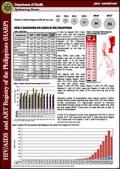
Resource | Fact Sheets,
In July to August 2017, there were 1,962 new HIV antibody sero-positive individuals reported to the HIV/AIDS & ART Registry of the Philippines (HARP). Eighty-seven percent of those were asymptomatic at the time of reporting.
Most (95%) were male. The median age was 27 years old (age range: 3 to 66 years). More than half of the cases were from the 25-34 year age group while 31% were youth aged 15-24 years.

Resource | Tools,
The Programme, currently in its third phase, is supported by a $16.7 million grant from the Global Fund to Fight AIDS, Tuberculosis and Malaria and will run until 2018. Led by Save the Children – Nepal (the Principle Recipient of the Grant), MSA promotes and protects the rights of key populations of MSM and transgender people and is building a foundation to ensure that regional and country-level community networks continue to be an essential partner in the HIV response. It focuses on strengthening community systems to improve coordination with local governments and health care providers, deliver concentrated and quality capacity development support, and provide technical assistance to ensure high intervention impact and sustainability.

Resource | Publications,
The International HIV/AIDS Alliance’s theory of change sets out the difference we want to see in the world, and defines the logical sequence of changes we believe are needed to achieve our desired outcomes. It describes the assumptions behind our chosen strategies (as set out in HIV, Health and Rights: Sustaining Community), and the preconditions that need to be in place for these changes to occur. This theory of change is designed to help us better describe what we do, provide a tool for learning and reflection and evaluate our work.

Resource | Publications,
This report documents the discussions and recommendations made during the conference 'Celebrating 10 years of the Yogyakarta Principles: What have we learnt and where to now?' held from 25-26 April 2017 at the Dusit Thani Hotel in Bangkok, Thailand.
Since the adoption of the Yogyakarta Principles, many advances have been made toward ensuring that people of all sexual orientations and gender identities can live with the equal dignity and respect to which all persons are entitled. Many States now have laws and constitutions that guarantee the rights of equality and non-discrimination without distinction on the basis of sexual orientation or gender identity. Internationally, including within this region, there is increasing discussion about discrimination experienced by intersex people on the basis of their sex characteristics. With these developments and challenges in mind, the discussion covered broad-ranging issues and reached beyond the Principles as they were developed a decade ago, based on the existing international human rights law at that time. It encompassed legal developments over that period and other international, regional and national measures to promote and protect the rights of LGBTI people.

Resource | Publications,
Adolescence is a period of transition from childhood to adulthood when many behaviors and events set the stage for adult health. Demographic and Health Surveys (DHS) data are often used to describe adolescents age 15-19 but are infrequently used to examine younger adolescents age 10-14.
This study employs retrospective data from women and men age 15-24—the most recent cohort that experienced adolescence in the 5 years preceding the survey—to investigate health outcomes during the full range of adolescent years from age 10-19. For 52 countries, this study compiles adolescent sexual and reproductive health indicators in the areas of marriage, sexual activity, contraceptive use, fertility, maternal health, and gender-based violence.
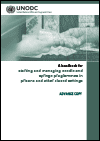
Resource | Publications,
To successfully address HIV and hepatitis where injecting drug use occurs, countries should prioritize implementing NSPs and evidence-based drug dependence treatment (specifically OST), HIV testing and counselling and access to antiretroviral therapy.
Needle and syringe programmes (NSP) provide access to sterile injecting equipment to people who inject illicit drugs to prevent the transmission of HIV and hepatitis B and C through shared injection equipment.

Resource | Publications,
The AIDS Epidemic Modelling is a useful and practical exercise that enables HIV data experts to effectively use country specific up-to-date epidemiological evidence and real time data to develop reliable population size estimates and based on country specific best practices construct high impact prevention and treatment scenarios to optimize the program to maximize impact, identify and mitigate key data gaps and connect potential applications of the modelling approaches for strengthening the national HIV response.





